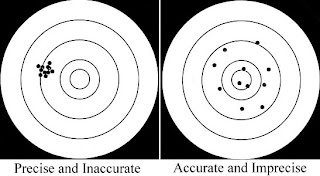At some point or another, most of us have asked,
“What is art?” I think I’ve actually asked or thought that question so often
that I’m not really sure what it means anymore. Are we wondering how powerfully
a piece conveys an idea? Are we talking about the artist’s technical proficiency?
Are we discussing art’s value?
Exploring the modern art, street art, and
graffiti of Detroit brought up a lot of questions and emotions
about how much we can really understand “from the outside.” Despite the
expansive empty lots and a skyline made up largely of abandoned buildings, the
people of Detroit are very much alive.
What
time is it?
The Heidelberg Project hit me more powerfully
than I expected, perhaps in part because the artist who started the whole thing
was actually there – and talked to us! Tyree Guyton began creating this outdoor
art environment before I was born, and has been working on it ever since; he
has almost single-handedly transformed the rough, inner-city neighborhood of
his childhood into a place that attracts visitors from far and wide. While we
were wandering through, he asked us – repeatedly – “What time is it? What is
happening now? Here?”
Tyree is highly educated and his work has been
displayed around the world, yet he still spends much of his time working on
Heidelberg Street. The project’s undertones of political protest haven’t gone
unnoticed, either; in fact, the City of Detroit has twice ordered complete
destruction of the project and last year the neighborhood was victim to a
series of arson attacks. Tyree continues to build right on top of the burned
wood.
When we met, his passion was abundantly clear, but it was hard
not to maintain some degree of skepticism. Tyree spoke in that sort of
child-of-the-sixties way, subtly (or sometimes blatantly) demanding peace and
love for humankind without giving any specific prescription. Someone in our group couldn’t resist asking, “Well, how
do you know when you’ve made a difference?” Tyree responded by directing the questioner toward the cracked mirror that was leaning
against a tree.
You
better the world when you better yourself.
Whether or not it sounds too hippie or spiritual
or whatever, I think there is a lot of truth to it. If we were all just a
little better, just a little more selfless, wouldn’t we make those around us
happier? There is so much I don’t know and so many problems – in countries half
way across the globe and in my own backyard — but learning about them is
probably some sort of first step. It’s
all to easy, though, to stop once you learn, feeling somehow enlightened but
not acting on it. I’m definitely guilty of this.
What
is art?
In a modern art museum, I began to be bothered by
the way objects were used as art. It was different than some of my previous
annoyance with modern art (which had been more along the lines of “Seriously?!?
I made cooler stuff with finger paints when I was 4.”) What irked me here was
that when art is used as a form of education, the lines blur between “teaching”
and “entertaining.” (To some extent, I feel the same way about films such as 12 Years a Slave. Yes, I learned about a
tragic and humiliating part of American history, but I also spent an evening at
the movie theater and sent profits back to Hollywood.)
When a woman tattoos herself with the latitude
and longitude at which she found a dead body, is she somehow belittling an
unnamed family’s grief? When abandoned backpacks of immigrants crossing
Mexico’s border are collected, are we inhumanely condensing hundreds of years
and miles of suffering onto one wall?
I’m worried it somehow assuages our own guilt
without making a difference. I’m also worried that we get some sort of bizarre
“entertainment” from art of this form. It’s not pleasant entertainment, mind
you, but it is at least interesting and occupying; the real issue is how we use
that new awareness. Maybe that’s part of the point: we have to get pretty
uncomfortable with a situation before we consider dealing with it.
A friend and I pondered on the bus to and from Detroit,
trying to untangle the parallels we saw between patient-doctor,
artist-audience, and insider-outsider. We ended up with more questions than
answers, as usual.
How do you know when you’ve treated a problem? And who
decides if we’ve even made progress?














